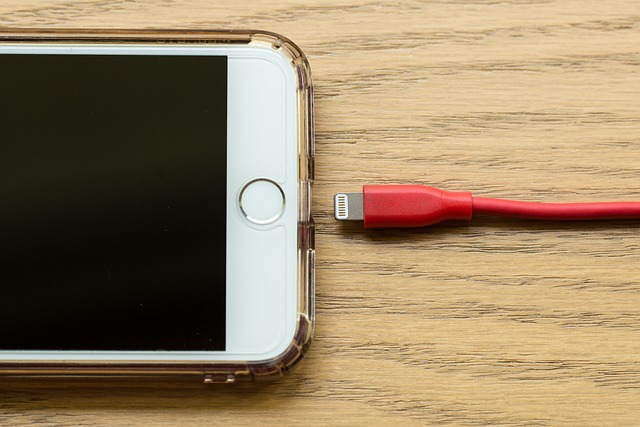Replacing your device's battery involves careful preparation and execution to ensure safety and optimal performance. Begin by confirming your device's make and model to obtain the correct replacement battery. Assemble essential tools like screwdrivers, pliers, wire cutters, strippers, and a multimeter. Use protective gear such as gloves and goggles, and work in a clean, well-lit space. Power down your device, verify no charge remains using a multimeter, and proceed to remove the old battery safely, noting its connections and positioning for reassembly. Install the new battery correctly, ensuring secure connections and proper alignment. After installation, test the new battery by charging it fully and monitoring its performance over a day, checking functions like power on/off, Wi-Fi, Bluetooth, and mobile data, as well as various applications to assess usage scenarios. Always follow the user manual for post-replacement testing specifics. A successful battery replacement will lead to an improved device efficiency and extended lifespan, with a new battery that performs reliably.
Replacing a battery can be a straightforward task with the right guidance. This article outlines a comprehensive, 10-step process for easily swapping your device’s power source. Begin by familiarizing yourself with your device’s specific battery requirements to ensure compatibility. Next, follow our detailed, step-by-step guide designed to safely remove the old battery without causing damage. Selecting the right replacement battery is crucial; we’ll help you choose one that meets your device’s needs and offers superior quality. For a hassle-free installation, we’ll list essential tools and safety measures to take. Finally, after installation, test your device to confirm the new battery operates correctly. With these steps, replacing your battery will be an achievable task, enhancing your device’s performance and longevity.
- Preparing for Battery Replacement: Understanding Your Device's Requirements
- Step-by-Step Guide to Safely Remove Your Old Battery
- Selecting a New Battery: Compatibility and Quality Considerations
- Tools and Safety Precautions for Hassle-Free Battery Installation
- Finalizing the Replacement: Testing Your Device Post-Battery Swap
Preparing for Battery Replacement: Understanding Your Device's Requirements

When considering a battery replacement for your electronic device, preparation is key to ensuring a smooth and efficient process. Begin by understanding the make and model of your device, as this information is crucial for sourcing the correct replacement battery. Manufacturers often provide specifications and compatibility guidelines that must be adhered to avoid damaging your device or compromising its performance. Next, gather all necessary tools and accessories, which may include a compatible battery charger, screwdrivers of varying sizes, and, if applicable, a pry tool or suction handle designed for battery removal. These tools will aid in the safe and secure removal of the old battery and installation of the new one. Additionally, it’s advisable to refer to the device’s user manual or an online service manual, which typically outlines the steps required for battery removal and replacement, complete with diagrams and part numbers. This careful preparation will set the stage for a successful battery replacement, ensuring that you replace your battery easily and without complications.
Before proceeding with the actual replacement, ensure that you have a static-free and well-lit workspace to prevent any electrical interference or mishaps due to poor visibility. Safety should also be at the forefront of your preparations; make sure to discharge the device fully before starting the replacement process to eliminate any risk of electrical shock. If your device has a removable battery, power it down and remove any stored energy by connecting it to a charger until the charge indicator shows zero percent. By adopting these precautionary steps and having all the necessary components on hand, you’ll be well-equipped to tackle the task at hand, making the act of replace battery a straightforward endeavor.
Step-by-Step Guide to Safely Remove Your Old Battery

When it comes time to replace your battery, safety and precision are paramount. To ensure a smooth process, follow this step-by-step guide tailored for safely removing your old battery. Begin by gathering all necessary tools and protective equipment. This includes a screwdriver set with the appropriate sizes for your device, a new battery, gloves to protect your hands, and safety goggles to prevent any debris from affecting your vision. Ensure your workspace is clean and well-lit to avoid any mishaps during disassembly.
Before you proceed, power down your device completely and remove any external power sources. This step prevents the risk of electrical shocks or damage to both the old battery and the device’s internal components. Next, carefully refer to your device’s user manual or a reliable online guide for specific instructions on locating the battery. Typically, you will find the battery in an accessible compartment or enclosed within the device’s casing. Gently pry open any fasteners or clips securing the battery compartment, taking note of how each component is positioned to facilitate correct reassembly later. Once the compartment is open, disconnect the battery connector, which is usually a ribbon or multi-pin cable connecting the battery to the device’s motherboard. This step isolates the battery from the electronic circuitry, reducing the risk of electrical shorts or accidents during removal.
Now, if your device has adhesive securing the battery in place, gently apply a plastic putty knife or similar tool to lift an edge without causing damage to the device. If screws are used, unscrew them carefully by hand or with a screwdriver, ensuring not to strip the heads. With the battery now disconnected and any fasteners removed, you can carefully take out the old battery. Inspect it for any bulging, cracks, or other signs of distress that might have necessitated its replacement in the first place. Once the old battery is out, prepare to install the new one by following the reverse process: align the new battery in its compartment, reconnect any cables, and secure it with clips or screws as applicable. After the new battery is properly installed, power on your device to confirm that it’s functioning correctly. Always dispose of old batteries responsibly according to local regulations, marking them as hazardous waste if necessary.
Selecting a New Battery: Compatibility and Quality Considerations

When it comes time to select a new battery for your device, compatibility and quality are paramount considerations that will determine the effectiveness and longevity of your power source. The first step is to ensure that the battery you choose is compatible with your specific device. This involves checking the model number, battery size, and voltage requirements. A battery that matches these criteria not only ensures proper functioning but also prevents any potential damage to your device due to improper fit or power output. Once compatibility is confirmed, attention should be directed towards the quality of the battery. High-quality batteries typically offer better performance, longer lifespans, and improved safety features compared to lower-grade options. Look for batteries that have undergone rigorous testing and carry certifications from reputable organizations. This assures that the battery meets industry standards and can handle the demands of your device effectively. In addition to these factors, consider the brand reputation and customer reviews when making your selection. A reliable brand with positive user feedback is more likely to provide a battery that offers consistent performance and replaces your old one without any hassle. By carefully evaluating compatibility and quality, you can replace your battery with confidence, ensuring your device operates at its best for years to come.
Tools and Safety Precautions for Hassle-Free Battery Installation

When embarking on the task of replacing your battery, it is crucial to gather the necessary tools and observe safety precautions to ensure a hassle-free experience. To begin, locate the following tools: a set of screwdrivers, pliers, wire cutters, wire strippers, a multimeter for testing voltage, and a new battery with the correct specifications for your device. Additionally, you will need protective gloves, safety glasses, and an anti-static mat or bag to prevent electrostatic discharge (ESD) damage during handling.
Prepare the workspace by clearing it of any unnecessary items that could cause tripping or other accidents. Ensure the area is well-lit and ventilated for optimal visibility and airflow. Before you start, switch off and unplug your device to cut off all power sources. Remove the battery cover or case using the screwdrivers, keeping track of each screw so they can be replaced in their original positions. Double-check that no residual power remains in the device by using the multimeter to test the voltage at various points where the battery connects. If there is any remaining charge, allow it to dissipate completely or discharge safely through proper channels before proceeding.
Once the device is fully powered down and the old battery is removed, install the new battery by aligning it with the battery compartment and securing it with the screws you set aside. Reconnect any battery leads, ensuring tight and secure connections. Finally, reassemble the device, being mindful of how each part fits together from your initial disassembly process. With these tools and safety precautions in place, replacing your battery can be accomplished with confidence and care, minimizing the risk of damage or injury.
Finalizing the Replacement: Testing Your Device Post-Battery Swap

When your device’s battery has reached the end of its lifecycle, replacing it can significantly enhance its performance and extend its usability. After carefully following the steps to remove and install the new battery, the final phase is to test your device to ensure everything functions as intended. Begin by charging your newly installed battery to 100% before conducting any tests. This initial charge will prime the battery and provide an accurate assessment of its capacity to hold a charge. Once fully charged, observe the battery level indicator throughout the day to confirm that it accurately reflects the charge status.
Next, perform a series of operational checks. Start with basic functions such as turning on and off the device, checking connectivity options like Wi-Fi, Bluetooth, and mobile data, and ensuring that all ports and sensors are responsive. Run various applications to test the battery’s performance under different conditions—light usage, moderate usage, and heavy usage. Pay attention to how quickly the battery drains during these tests. If you notice any anomalies or unexpected behavior, it may be necessary to recheck your connections or consider if a defective battery was installed. After confirming that all systems are operational and the battery level is stable, your device’s replacement battery should be successfully integrated. Always refer to your device’s manual for specific instructions on post-replacement testing, as some devices may have additional steps or software diagnostics to ensure optimal functionality after a battery swap.
When it comes time to replace your battery, adhering to a clear and methodical approach can make all the difference. This article has laid out ten distinct steps tailored to guide you through the process of preparing for replacement, safely removing your old battery, selecting an appropriate new one, and ensuring your device is functioning optimally after the swap. By following these guidelines, you can confidently replace your battery easily, thus extending the life of your cherished devices without compromising on safety or quality. Remember to take your time, use the right tools, and prioritize caution throughout each step. With the right preparation and attention to detail, replacing a battery doesn’t have to be an overwhelming task.
